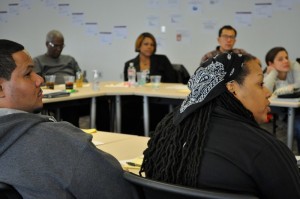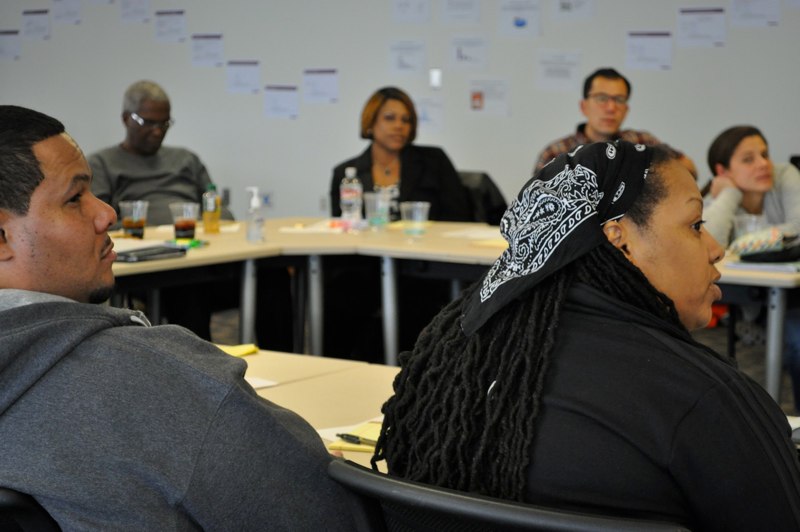 Every day, nearly 50,000 children are forced to spend the night away from their families because of their involvement in the juvenile justice system, according to a new report.
Every day, nearly 50,000 children are forced to spend the night away from their families because of their involvement in the juvenile justice system, according to a new report.
It’s not as if these youth have no one to care for them. Families of young detainees care deeply about their children, but often feel helpless when their children get into trouble -- especially in the face of high adult incarceration rates, zero-tolerance school policies and reduced social services, which can make it difficult for families to offer support. Add to this a juvenile court system that practically shuts out family members from receiving or offering input, and the feelings of frustration and helplessness multiply.
These are the findings of Families Unlocking Futures: Solutions to the Crisis in Juvenile Justice, a report released Monday that offers a blueprint for reforms that involve family members at every step when a child gets into trouble, whether at school or in the juvenile justice system. It’s based on the belief that timely and appropriate intervention, with the help of families, can prevent the inexorable march for some children from school to juvenile court, and ease their transition from detention back into society.
Such detention doesn’t just take an economic and mental toll on detainees and their families; it also affects taxpayers and state budgets. Each day a youth spent in a juvenile facility cost taxpayers $241 in 2007, the report finds. Multiplied by 64,558 youth, states across the county spent a total of $5.7 billion for detention that year.
Family members surveyed for the report said they frequently felt ignored at proceedings in juvenile courts, overlooked by probation staff and shut out of their children’s lives in correctional facilities, even when it was time for their children to be released.
Eighty-one percent of family members surveyed said they wanted to learn about their children’s court dates in a more timely fashion. Eighty-five percent wanted court appearances to be held at a time when it was easier for them to attend. Ninety-one percent thought courts should involve them in deciding what happens with their child if he is found guilty.
Once their children were in detention, 75 percent of family members said they faced serious obstacles to visitation, and more than 50 percent said they found it difficult to reach facility staff who could tell them how their child was doing. Only 32 percent said juvenile justice professionals discussed their child’s release plans with them before release.
“Kids are told, ‘It’s your release day. Grab your clothes, it’s time to go,’” said one California parent quoted in the report. “This is poor planning on the part of systems and only sets the kids up for failure.”
Getting children back into school after their release was either “difficult” or “very difficult” for 69 percent of those surveyed.
The report makes several recommendations for juvenile courts to solve this large-scale lack of communication with families.
“A young person’s parents and family should not only be invited, but also encouraged to participate in school disciplinary hearings, and in juvenile court diversion, detention, adjudication, and dispositional hearings,” the report says.
Parents should be notified when a school is considering suspension or other disciplinary procedures; when a student is arrested; and they should be told where their child is being held. Families should receive guidance through the court process; be allowed flexible visiting hours; and charged affordable calling rates to ensure more frequent phone contact with their children, the report recommends.
The blueprint further calls for wide-ranging reform of the juvenile justice system, including eliminating zero-tolerance and stop-and-frisk policies, decriminalizing status offenses and drug possession, and encouraging a restorative justice approach to youth courts.
Released by Justice for Families, a national alliance of organizations that work with relatives of children involved in the juvenile justice system, the report’s recommendations are based on findings from a survey of 1,000 family members across nine states, from 24 focus groups involving 152 youth and their family members across nine states, and from a review of hundreds of news and academic articles on juvenile justice.
Photo by Justice For Families
